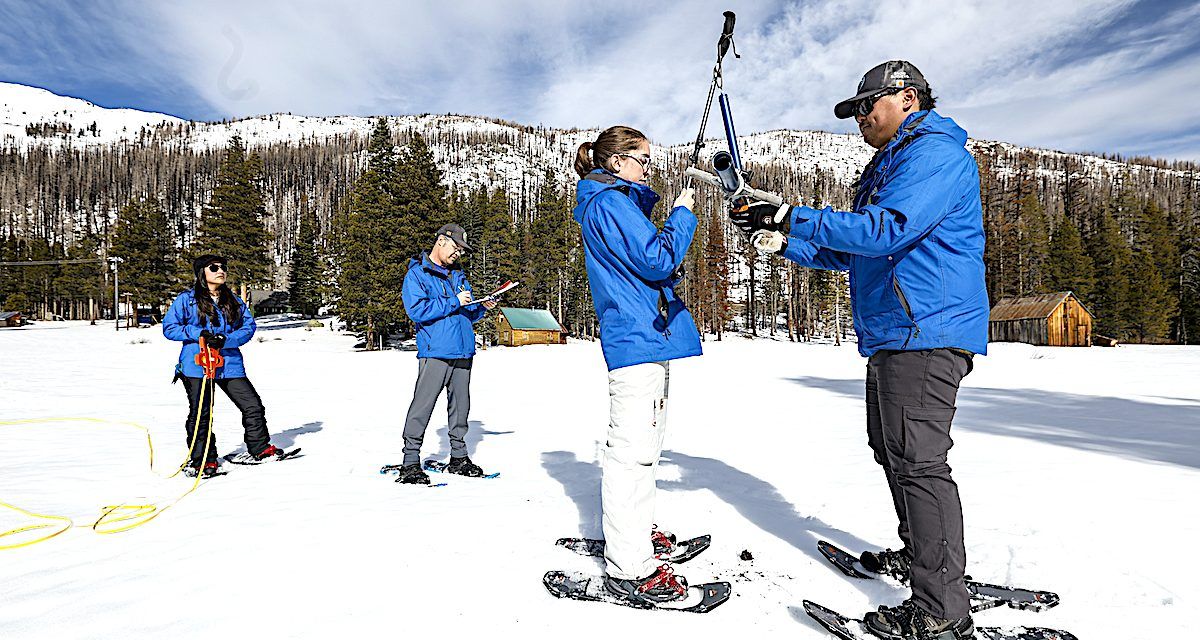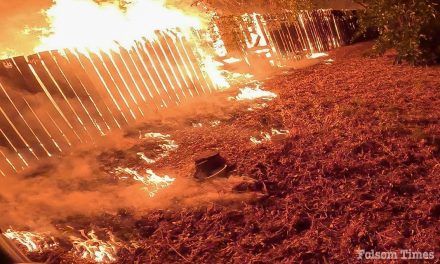Despite survey results, Folsom Lake levels remain approximately 121% of normal
The Department of Water Resources (DWR) today conducted the second snow survey of the season at Phillips Station. The manual survey recorded 29 inches of snow depth and a snow water equivalent of 10 inches, which is 58 percent of average for this location. The snow water equivalent measures the amount of water contained in the snowpack and is a key component of DWR’s water supply forecast.
Today’s results reflect a modest increase in the snowpack since January 1, but overall conditions are still far below normal. DWR’s electronic readings from 130 stations placed throughout the state indicate that the statewide snowpack’s snow water equivalent is 8.4 inches, or 52 percent of average for this date, an improvement from just 28 percent of average on January 1. One year ago, the snowpack statewide was 214 percent of average on February 1.
“This year’s El Niño has delivered below average precipitation and an even smaller snowpack,” said DWR Director Karla Nemeth. “Californians must prepare for all possible conditions during the remaining months of the rainy season.”
Despite additional precipitation in January, many storms so far this year have been warmer than average, producing rain rather than snow at higher elevations. Overall statewide precipitation is 82 percent of average for this date. Last year’s snowpack was aided by both above average precipitation and below average temperatures, which created a historic snowpack and improved reservoir storage statewide, which is still above average. Lake Oroville, the State Water Project’s largest reservoir, is currently 76 percent of average.
“Despite strong El Niño conditions in the Pacific Ocean, a high-pressure system and several other climate factors have led to below average conditions so far and most storm impacts have been focused along the coastal regions,” said Dr. Michael Anderson, State Climatologist with DWR. “Many of these storms have also been warmer than average and produced more rain and less snow, a far cry from last year’s near-record snowpack and once again demonstrating how California can swing from one extreme to another.”
Despite the readings in the Sierra, on Tuesday officials reported that the storage levels at Folsom Lake are currently 528,975 acre-ft, which is approximately 121% of normal. The average for this time of year is approximately 437,091.6acre-ft. Maximum recorded Storage since record keeping began in 2003 was 2005-06-12 when levels reached 970,375 acre-ft. Lowest recorded Storage was 2015-12-04 when levels receded to 135,561 acre-ft.
Even though this winter has provided below average precipitation overall, water officials reminded everyone today that it can only take one storm to produce severe flooding in the right circumstances. Communities in San Diego, the Bay Area and along the North Coast have already experienced flooding impacts this winter, highlighting the need to always be prepared for flood risk. DWR and the Joint State-Federal Flood Operations Center have been working with communities and emergency response agencies to coordinate flood response and provide training to prepare for flooding. All Californians should follow three basic steps to plan for possible floods:
- Be aware of your risk – know whether your home is downslope of a burn area or in a floodplain; pay attention to weather forecasts; listen to local authorities.
- Be prepared – always have an emergency evacuation kit ready; be ready to evacuate early; have a plan for where you will go in an emergency.
- Take action – subscribe to your local emergency providers to get updated information. If local authorities issue an evacuation order, do not delay, follow local guidelines for evacuation and never attempt to drive through a flooded roadway.
On average, the Sierra snowpack supplies about 30 percent of California’s water needs. Its natural ability to store water is why the Sierra snowpack is often referred to as California’s “frozen reservoir.” Data from these snow surveys and forecasts produced by DWR’s Snow Surveys and Water Supply Forecasting Unit are important factors in determining how DWR manages the state’s water resources.
Top photo: Right to left, Sean de Guzman, Manager of the California Department of Water Resources Snow Surveys and Water Supply Forecasting Unit, Jordan Thoennes and Andy Reising, both DWR Engineers in the Snow Surveys and Water Supply Forecasting Unit, and Angelique Fabbiani-Leon ñ State Hydrometeorologist, weigh the aluminum snow depth survey pole during the second media snow survey of the 2024 season at Phillips Station in the Sierra Nevada.




